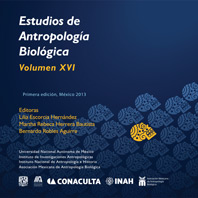In Teoti huacan tlapati ni, ¿a Teotihuacan hospital?
DOI:
https://doi.org/10.22201/iia.14055066p.2013.56760Keywords:
Tepantitla, murals, architectural spacesAbstract
Teotihuacan architecture can be characterized by a strong management of public and private space, according to the function of buildings. Within that context there are constructions that “talk” of the institutions that created them, which in turn resulted from the state structure which differences were marked by the architects. These constructions “play” with the size and distribution of space in relation to the role played, which is reflected in the mural that decorates them. With this approach, by contrasting analysis techniques of social space functions with the interpretation of the testimonies of the murals, in this paper we propose to show, in an interdisciplinary way, that the urban unit of the “Palace Tepantitla” worked as a hospital or tlapatini to influence the relationship between health and disease in the population of the city of Teotihuacan.
Downloads
Downloads
Published
How to Cite
Issue
Section
License

http://creativecommons.org/licenses/by-nc-nd/4.0/


